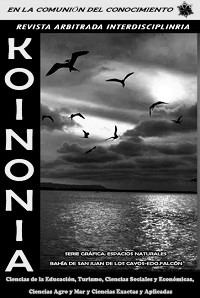Students with hearing impairment and inclusive processes in Higher Education Institutions
DOI:
https://doi.org/10.35381/r.k.v8i1.2780Keywords:
Higher education, educational inclusion, learning barriers, hearing impairment, (UNESCO Thesaurus)Abstract
This research is aimed at analyzing the impact of inclusive processes for students with hearing impairment in higher education. For the methodology, a case study was carried out, specifically with students from the Early Childhood Education Program who were hearing impaired. A survey was applied as a technique and a questionnaire was used as an instrument to interview both the students and their teachers. The results highlighted the new policies existing in Higher Education and their inclusive nature; teacher training on methodological strategies; the inclusion of a sign interpreter and the need to make technological adaptations. To conclude, it is considered pertinent to make a permanent review of the current regulations, of the students’ profiles who present specific barriers, as well as of the realities present in the teaching community with respect to the preparation of suitable instruments.
Downloads
References
Carrascosa, J. (2015). La discapacidad auditiva. Principales modelos y ayudas técnicas para la intervención. [The hearing impaired. Top models and technical assistance for intervention]. Revista Internacional de apoyo a la inclusión, logopedia, sociedad y multiculturalidad, 1(2), 101-113. Disponible en https://n9.cl/fwu33
Coka, J, y Maridueña, I. (2021). Juegos didácticos inclusivos para niños con discapacidad auditiva. [Inclusive didactic games for children with hearing disabilities]. Revista de Ciencias Humanísticas y Sociales (ReHuSo), 6(1), 129-143. Disponible en https://n9.cl/kqqsd
Consejo Nacional de Igualdad de Discapacidades (CONADIS). (2022). Estadísticas de Discapacidad. [Statistics on Disability]. Obtenido de Gobierno del Encuentro. Juntos lo hacemos posible. Disponible en https://n9.cl/r0f9
Contreras, R, Contreras, L. y Figueroa, A. (2022). Inclusión de estudiantes con discapacidad diferencial auditiva a través de la aplicación móvil ListenApp.[Inclusion of students with hearing impairment through the mobile application ListenApp] Ingeniería y competitividad, 24(1). Disponible en https://n9.cl/bfst0
García, C. y Marroquín, M. (2021). Estrategias metodológicas para la inclusión en la Educación Superior. [Methodological strategies for inclusion in higher education]. Revista Conrado, 17(S3), 223-232. Disponible en https://n9.cl/xbmin
Hernández, B. y Sánchez, J. (2012). La educación del estudiante con discapacidad auditiva: experiencia en la escuela inclusiva. [The education of the hearing impaired student: experience in the inclusive school]. International Journal of Developmental and Educational Psychology, 3(1), 155-162. Disponible en https://n9.cl/wo4kz8
Ibáñez, M. (2017). Inclusión y equidad: un análisis con base en el acceso y logros para el nivel medio de educación en Argentina. [Equality and inclusion: an analysis based in access and achievements for mid-level education in Argentina]. Semestre Económico, 20(43), 111-137. Disponible en https://n9.cl/t673s
Larrazábal, S., Palacios, R., y Espinoza, V. (2021). Inclusión de Estudiantes Sordos/as en Escuelas Regulares en Chile: Posibilidades y Limitaciones desde un Análisis de Prácticas de Aula. [Deaf Students’ Inclusion in Chilean Regular Schools: Possibilities and Limitations from an Analysis on Classroom Practices]. Revista latinoamericana de educación inclusiva, 15(1), 75-93. Disponible en https://n9.cl/heyr5d
Maingon, R. (2007). Caracterización de los estudiantes con discapacidad: Caso: Universidad Central de Venezuela. [Characterization of students with disabilities at the Universidad Central de Venezuela] Revista de Pedagogía, 28(81), 43-79. Disponible en https://n9.cl/vpe3t
Martin, R., Moore, J., y Schindler, S. (2016). Definiendo la desigualdad. [Defining inequality]. ARQ, (93), 30-41. Disponible en https://n9.cl/tmpdp
Martínez, M., Pérez, M., Padilla, D., López, R., y Lucas, F. (2008). Métodos de intervención en discapacidad auditiva. [Methods of intervention in hearing impairment]. International Journal of Developmental and Educational Psychology, 3(1), 219-24. Disponible en https://n9.cl/05q1r
Rodríguez, L. (2015). La deficiencia auditiva. Identificación de las necesidades educativas especiales. [Hearing impairment. identification of special educational needs special] Revista Internacional de apoyo a la inclusión, logopedia, sociedad y multiculturalidad, 1(1), 95-109. Disponible en https://n9.cl/g2opd
Rodríguez, Y., Veloz, L., y Reyes, R. (2018). Las ayudas técnicas. Recurso para garantizar la inclusión educativa de personas con discapacidad auditiva. [The technical aids. Resource to ensure the educational inclusion of people with hearing disabilities] Conrado, 14(63), 229-234. Disponible en https://n9.cl/fk4cv
Sánchez, D., Romero, R. y Padrón, J. (2019). Inclusión de personas con discapacidades auditivas y visuales en la investigación [Inclusion of people with auditive and visual disabilities in research]. Telos, 21(1), 221-241. Disponible en https://n9.cl/axm5y
Torres, J. (2022). Por una inclusión educativa y social. [For educational and social inclusion]. Revista Internacional de Investigación en Ciencias Sociales, 18(1), 1-2. Disponible en https://n9.cl/ldh4h
Valarezo, A., Gonfiantini, V. y Sánchez, F. (2022). Concepciones pedagógicas y actitudes sobre la inclusión de estudiantes universitarios con necesidades educativas específicas. [Pedagogical conceptions and attitudes about the inclusion of university students with specific educational needs]. KOINONIA. VII (14). Disponible en https://n9.cl/lvw0i
Véliz, V. (2018). Calidad en la educación superior. Caso Ecuador. [Quality in Higher Education. Ecuador Case]. Atenas, 1(41), 165-180. Disponible en https://n9.cl/dimwr
Published
How to Cite
Issue
Section
License
Copyright (c) 2023 Alexandra Irrazabal-Bohorquez, Zila Isabel Esteves-Fajardo, Juleidy Melany Jurado-Arana, Karla Romina García-Vera

This work is licensed under a Creative Commons Attribution-NonCommercial-ShareAlike 4.0 International License.
CC BY-NC-SA : Esta licencia permite a los reutilizadores distribuir, remezclar, adaptar y construir sobre el material en cualquier medio o formato solo con fines no comerciales, y solo siempre y cuando se dé la atribución al creador. Si remezcla, adapta o construye sobre el material, debe licenciar el material modificado bajo términos idénticos.
OAI-PMH URL: https://fundacionkoinonia.com.ve/ojs/index.php/revistakoinonia/oai.









